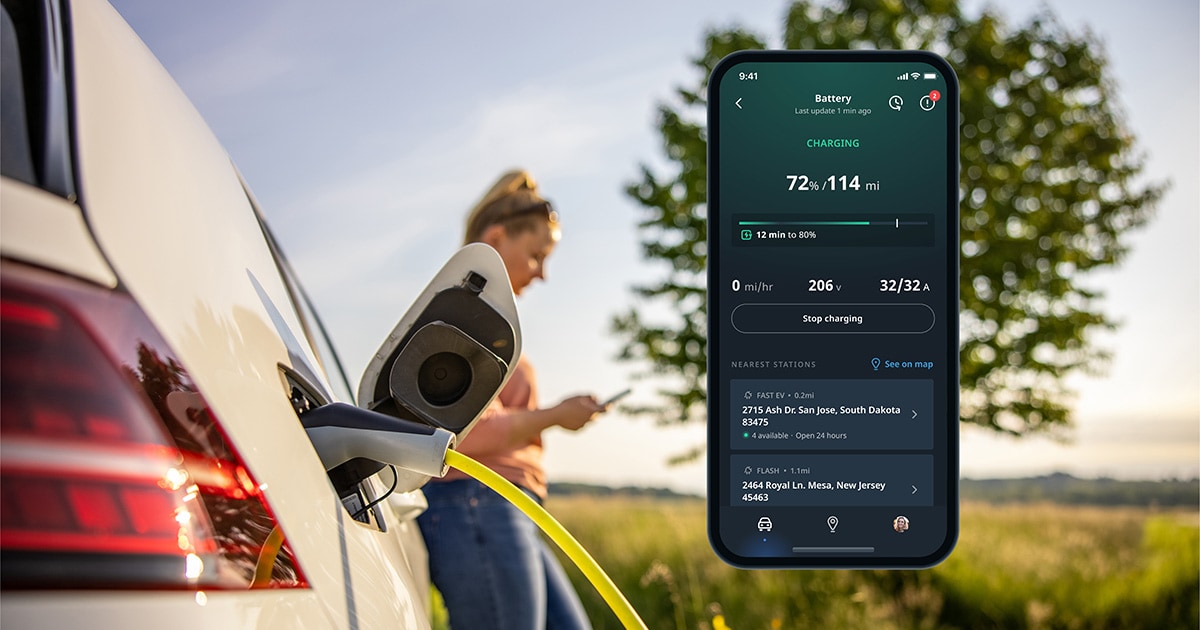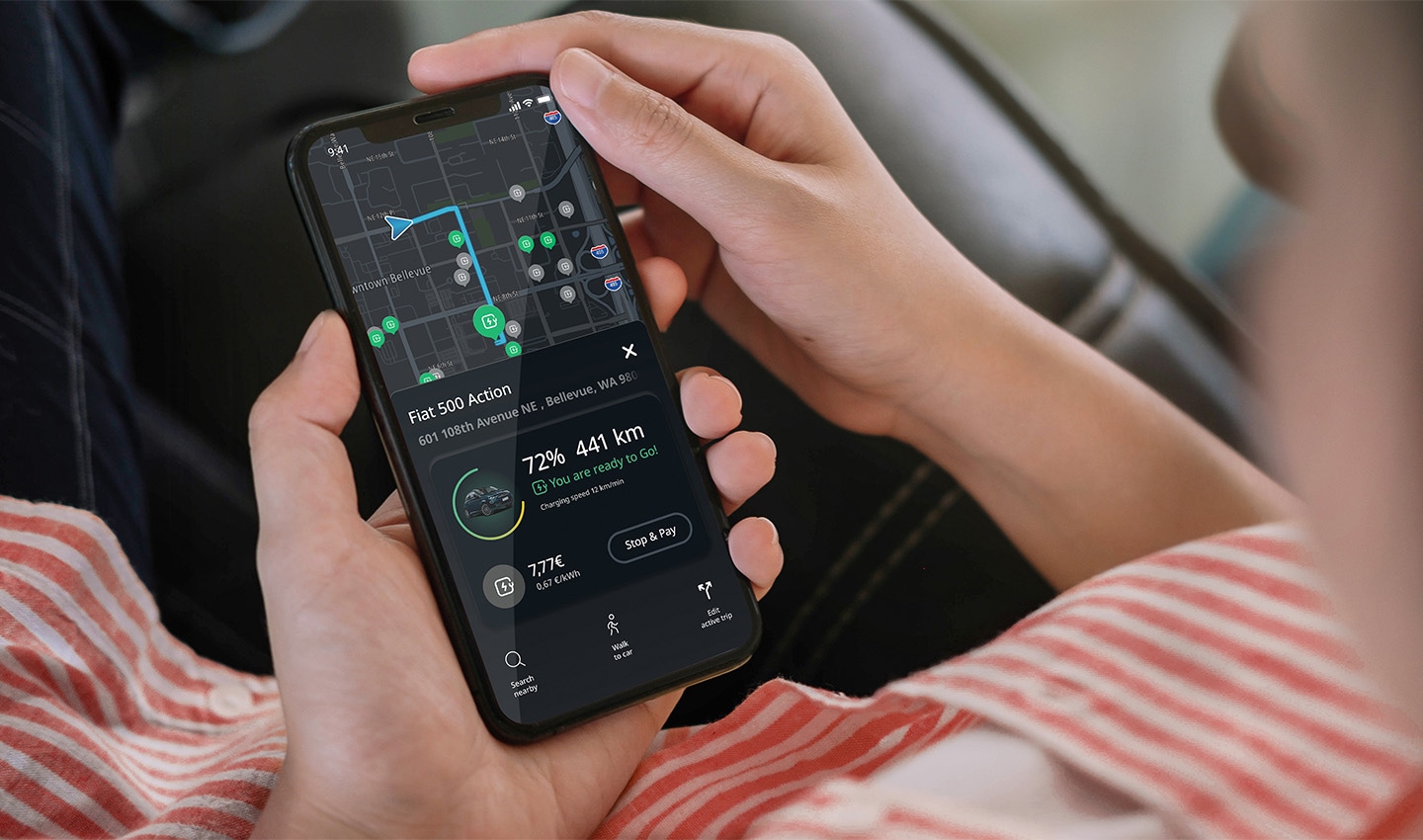
Today, most drivers no longer worry if their electric vehicle (EV) will go the distance. But when they do need to charge, they still face some pressing questions: Will there be available chargers at the next charging point? How long will it take to charge? How much will it cost, and how can I pay?
Once upon a time, the conversation about EVs was dominated by concerns over “range anxiety”: the fear of an EV running out of battery before reaching a charging station. We’ve written about range anxiety and the challenges it poses to electric mobility extensively.
In recent years, though, battery tech has come a long way. Get in a new EV, and you’ll find that you should be able to travel close to 480 km (300 miles) on a single charge. But while worries about EV range might be fading into the background, they’re being overtaken by a different concern: charging anxiety, which revolves around drivers’ fears of unavailable or faulty EV charging points.
Charging challenges
According to Drew Meehan, EV Product Manager at TomTom, much of today’s charging anxiety is being driven by a lack of standardization across existing charging networks. In many places, EV users must deal with vast differences in plug types, payment options, communication protocols between chargers and even charging speeds. It turns what should be the simple task of plugging in your EV and charging into a complicated and confusing experience.
Meehan explains: “In Europe, eMobility service providers (eMSPs) largely facilitate the payment process. They do that across multiple charge point operators (CPOs) – the companies that install and run the chargers. As the infrastructure has gotten more complex, it has created more fragmentation. You need different cards and different accounts to charge at different locations, because eMSPs don't all have the same terms, and they don't all work together.”
He adds: “In the North American market you have a slightly different setup, where the CPOs are also doing the payment. But they don't really share, so if you have a subscription to one brand, you can't just go to another brand and use the same subscription. You need all the different brand subscriptions in order to charge freely across different locations.”
On top of juggling multiple subscriptions and apps, EV drivers often must contend with less-than-reliable information about charging points. For instance, an app might direct an EV user to a charging station with available, compatible chargers. But when they get there, the driver finds that the chargers are broken or already in use by other vehicles. Or maybe the app showed that there were fast chargers available, but this isn’t the case – leaving the driver stuck charging for longer than they expected.
As Meehan puts it: “Those types of things mean that you have a lot to manage as an EV driver. You're trying to understand charging prices, speed and where charging points are available. It creates layers of complexity that most drivers have never had to experience before.”
Want more from Drew Meehan on the road ahead for EVs? Read our interview:
What can we do to solve charging anxiety?
Charging anxiety isn’t just a headache for EV drivers, it’s a big barrier to mass adoption of electric mobility. And it must be addressed for more people to make the move to electric. Fortunately, policymakers seem to be taking note. The Council of the EU recently adopted new legislation that aims to address many of the current pain points around charging. Set to come into force in 2025, the rules will expand the charging infrastructure along Europe’s main highways, allow payments to be made without an app or subscription and require pricing and charger availability to be clearly communicated.
Meehan believes that location tech companies have an equally important role to play in tackling charging anxiety. In TomTom’s case, it starts with helping carmakers develop systems that give drivers more reliable and useful data on all things related to charging.
He notes: “One of our strengths is fantastic data around things like traffic and maps, points of interest and EV charging stations. But we're also working directly with partners to build solutions that take, for example, background data on where chargers are and charging prices at different stations. Being able to pull in that data on top of what we already have gives us a huge advantage in being able to show the most relevant information to the driver at any time.”
 Giving EV drivers better information on what to expect when they need to charge goes a long way to reducing charging anxiety.
Giving EV drivers better information on what to expect when they need to charge goes a long way to reducing charging anxiety.
A new kind of driving experience
Data is power, but the way it’s delivered to drivers is just as important. Consider this: would you rather choose between dozens of similar-looking EV charging stations on a map, or have three of the closest stations with available, compatible fast chargers hand-picked for you? That’s where in-vehicle navigation can elevate the EV driving experience.
“Navigation is no longer just about getting you to your destination,” says Meehan. “EVs create moments where you also want to understand what your options are: where you're going to want to stop, need to stop and can stop. You should be able to get in your vehicle and go, without having to think about it too much. So, inside the car we're trying to create experiences that reduce those problems.”
Personalization will play a big part in helping shape those experiences. It means integrating information from a driver’s different eMSP or CPO subscriptions with their in-dash navigation, so they can get a heads-up on real-time prices at nearby charging stations. It also means more seamless integration between in-car systems and drivers’ other digital devices, so the information they need is always at hand.
Meehan says: “It doesn't have to all be in-dash, this information can also be accessed from your phone. So, you can take a look before you leave and say, ‘Oh, this isn't going to be too bad. I'm going to stop one time, it's here and it's going to cost me about this much.’ And then you can get into your car, knowing that you have that peace of mind.”
The industry still has some ways to go to solving charging anxiety – but if we’re able to shape a simpler, more harmonized charging infrastructure and provide drivers with better data and tools for managing the charging experience, a bright electrified future lies ahead.
“I don't think anybody really has the solution yet,” admits Meehan. “But OEMs have huge opportunities with the right kind of data, with good interactions and good in-car communications. They make it easier to step into an EV and get an experience that's very similar to what you would expect with an [internal combustion engine] ICE vehicle – but better. Because EVs offer a lot of advantages: they're smooth, they're quiet; it's a remarkably peaceful and wonderful driving experience. Honestly, I'm excited about our electrified future; it changes things a lot.”
People also read
)
The future of driving is electric, here's why
)
Beyond EV range anxiety – keeping the e-mobility revolution rolling
)
The complexity of fixing range anxiety
)
What is range anxiety?
* Required field. By submitting your contact details to TomTom, you agree that we can contact you about marketing offers, newsletters, or to invite you to webinars and events. We could further personalize the content that you receive via cookies. You can unsubscribe at any time by the link included in our emails. Review our privacy policy. You can also browse our newsletter archive here.
)